Understand the basic principles that enable fluid power systems to work.
Self-study lesson plans and training record download page.
Power transfer through fluid

Fluid power transfers power via the hydraulic fluid inside the pipework, no matter what the length or how many bends. It allows hydraulic systems to have the same pressure at every part of the circuit.
Conservation of energy
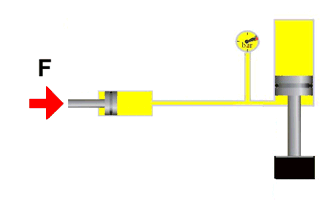
Conservation of energy means that Energy In always equals Energy Out. Therefore, as Force = P x A, a small force with big displacement = big force with small displacement. Also, the energy lost through pressure drops or restrictions will be converted to heat.
Control movement by braking
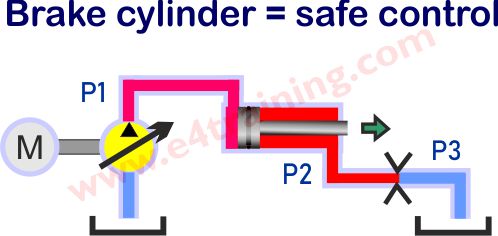
Hydraulics has traditionally been a braking technology. This means that actuators are controlled by restricting the fluid flow out of a cylinder by a small orifice or valve clearance. This way both sides of the cylinder are held under pressure which gives a much more solid and positive control. However, with the climate emergency, there is a push within the industry to switch to more ‘displacement control' technologies that provide higher efficiencies.
Pressure drop = heat
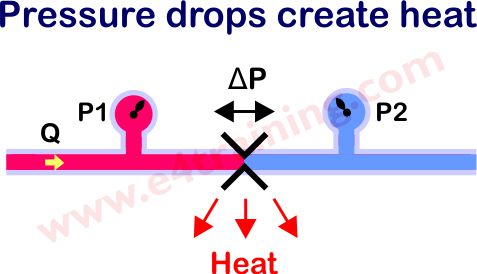
The pressure loss that occurs across each control orifice will transfer the energy into heat e.g. 100 bar pressure drop gives approximately a 5.5C temperature rise.
Thermal expansion of fluid
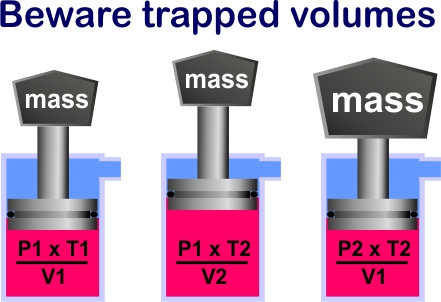
Fluid volume changes with temperature. With a 15 degree C temperature increase there should be a 1% volume increase which would give an additional 150 bar pressure increase in a sealed volume. Simply use Boyle's law P1xV1/T1 = P2xV2/T2.
Fluid is INcompressible (simple)
Hydraulic fluid is assumed to be INcompressible for most 'steady-state' directional valve applications e.g the fluid is so stiff that the flow at one point instantly causes movement at another point.
Fluid is compressible (advanced)
Hydraulic fluid is assumed to be compressible for most (advanced) 'dynamic' servo and proportional valve applications e.g. the compliance of the fluid means there will be a small but important time delay, or springiness, between the accelerating flow or movement at one point and the actuator movement at another point.
Gauge or Absolute Pressure
Hydraulic pressure readings are generally quoted in gauge pressure. Gauge pressure is the value a gauge reads and is the difference between the air pressure around the gauge and the fluid pressure.
Sometimes it is important to know and measure the absolute, ambient pressure. Absolute pressure includes the local air pressure which will vary depending on the height above sea level and potentially other environmental factors.
A pump's minimum inlet pressure requirement is normally quoted in absolute pressure and is vital for achieving a long pump life.
Dimensional analysis or unit conversion
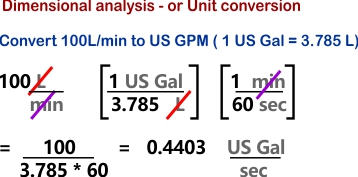
Converting units is a regular and risky process during hydraulic calculations so it's vital that you fully understand how it's done. Fortunately, there is a relatively simple technique for achieving this.
In this example, we show how to convert from 100 L/min to US Gal/sec. We start by adding the square brackets with US Gallons on the top and Litres on the bottom. There are 3.785 Litres in a US Gallon so by adding this on the bottom we have exactly this value on the top and bottom of the equation, so the value is unchanged. We can also add a second square bracket with minutes on the top and 60 seconds on the bottom. Again the value is still the same.
Next, we can cross out the units that are on the top and bottom, so we lose all of the Litres and minutes. This leaves us with a simple calculation to divide the 100 by 3.785 and 60.
The secret is to always write all of the units out clearly rather than trying to take should cuts with the simple units you know. A bit of practice and you'll soon come to love this technique.